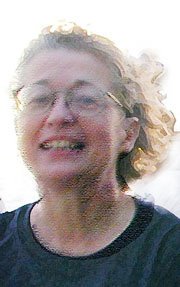Green Visions Plan for Los Angeles Parks and Open space
July 2006 - Undergraduate student surveys Los Angeles city parks, discovers urban realities
The Green Visions Plan (GVP), a project to create a "greener" Southern California, completed one of the largest and most comprehensive inventories of urban green space ever done.
A collaborative project of the USC Center for Sustainable Cities (CSC), the USC Geographic Information Systems (GIS) Research Laboratory and state land conservancies, the Green Visions Plan aims to guide the strategic development of new green space in Southern California.
“we needed an overarching vision for the region,” said CSC Director Jennifer Wolch, “in terms of how to do habitat conservation, watershed health planning and recreational open space development in a way that promotes multi-purpose projects.”
The plan encourages the thoughtful selection and management of land that can serve such multiple uses. The land conservancies involved, all state agencies, are the Rivers and Mountains Conservancy, Santa Monica Mountains Conservancy, Coastal Conservancy and Baldwin Hills Conservancy.
To complete this survey, one of the largest and most comprehensive inventories of urban green space ever done, the USC College students spent four to five days a week driving between southern Ventura County and northern Orange County, surveying the region’s open space.
Armed with maps, pens, clipboards, data forms and handheld computers, teammates collected detailed information about characteristics of each park. The handheld devices, encased in protective yellow plastic, had software specially designed for the field research as well as global positioning system technology.
Students also collected odd bits of knowledge about the city and its parks. "Pioneer" is a popular name for parks. And she didn't realize until she tried to get into one of Beverly Hills' beautiful green spaces that only residents, with I.D., are allowed to use that city's parks.
Greens fees vary widely from a new municipal golf course in Long Beach, which charged $81 to an older course in Inglewood, where fees were only $3. Larger issues arise -- such as, when you charge $81 to use a public golf course, is that still truly public? The use of parks by homeless individuals presents another difficult civic issue.
Past work by Wolch and John Wilson, professor of geography, has revealed clear disparities in park access amongst L.A.’s richer and poorer neighborhoods.
"That's important for a variety of reasons," said Wolch, dean of graduate programs in the College. "One is recreation. Another is that parks provide some environmental benefits — cleaner air, shade, cooler temperatures. And another reason [having equal access to parks is] important is because we have, in this country, an epidemic of obesity. If you have no parks that are accessible, or if they don’t have any facilities, then you may not get as much exercise."





0 Comments:
Post a Comment
<< Home